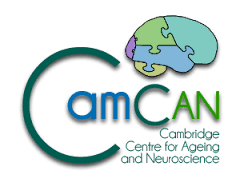CBSU bibliography search
To request a reprint of a CBSU publication, please
click here to send us an email (reprints may not be available for all publications)
fMRI reveals two distinct neural substrates for the processing of facial expressions of ‘core’ and ‘human’ disgust
Authors:
VON DEM HAGEN, E., Beaver, J.D., Lawrence, A.D, EWBANK, M.P. & CALDER, A.J.
Reference:
Proceedings of the 37th annual meeting of the Society for Neuroscience
Year of publication:
2007
CBU number:
6555
Abstract:
The insula plays a disproportionate role in processing facial expressions of disgust (Phillips et al, 1997; Calder et al, 2000). However, different types of disgust expression have been identified. One form, which we refer to as ‘core disgust’, is expressed as mouth gape and tongue protrusion; it is associated with food aversion/rejection and is found in multiple mammalian species (including humans). A second, human form, which we refer to as ‘human disgust’ is a more complex interpersonal reaction, expressed by curling the upper lip and wrinkling the nose (Rozin et al, 1994). Here we examine whether differences in the neural substrates underlying the processing of human and core facial expressions of disgust can be determined by fMRI. 27 subjects underwent whole-brain EPI on a 3T Bruker Medspec scanner while viewing facial expressions of core and human disgust. Images were presented in a blocked design, where each block comprised 4 faces (displaying core disgust human disgust, or neutral expressions) or fixation. Group-level analyses in SPM2 revealed significantly increased activation in anterior insula/frontal operculum for human v core and human v neutral faces. In addition, human disgust engaged a number of additional regions when compared with core disgust, including inferior frontal sulcus and tempoparietal junction and anterior cingulate regions implicated in theory of mind (ToM). By contrast, core disgust produced only a decrease in activation in right STS when compared with neutral faces. In conclusion, the presentation of human disgust faces engaged a network of brain regions including insula/operculum, and ToM regions, whereas core disgust faces elicited little change in response compared to neutral faces. Our results have implications for the theory that disgust is a distinctly human emotion that has developed from a more basic food rejection response.
References: Calder et al, Nat Neurosci 2000; Phillips et al, Nature 1997; Rozin et al, J Pers Soc Psychol 1994.

 MRC Cognition and Brain Sciences Unit
MRC Cognition and Brain Sciences Unit

